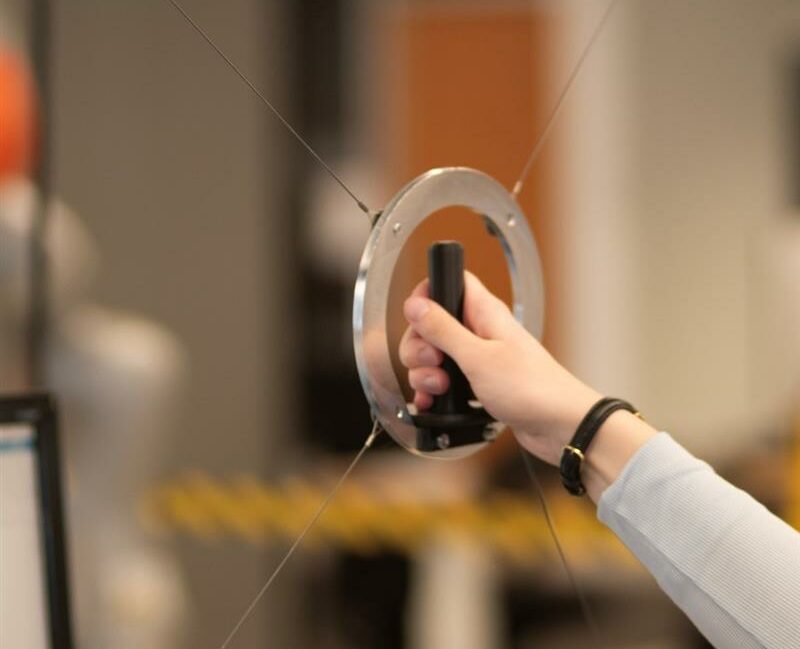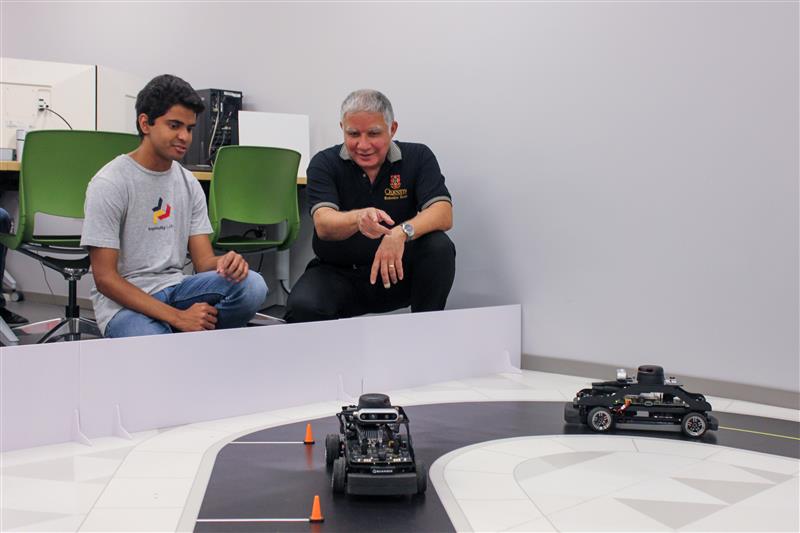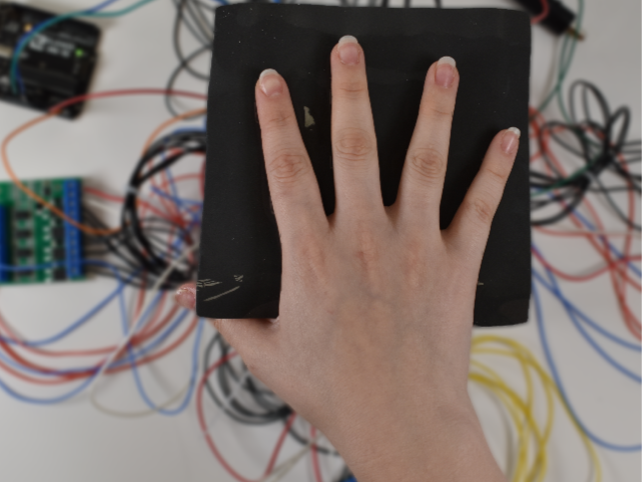Projects
Human–Robot Interaction and Collaboration
Our work focuses on designing robots that can work safely and naturally alongside people. This includes creating robotic systems that understand human intention, adapt their movements to match human behaviour, and provide physical or cognitive assistance when needed. Projects in this area explore wearable robotic devices for rehabilitation or physical support, collaborative robotic arms that adjust to human motion in real time, and intelligent guidance systems that help users perform precise tasks. One example involves a cooperative robotic tool that combines haptics, AI and ultrasound imaging to support surgeons in locating tumours with higher accuracy. The overall goal is to make interaction with robots intuitive, responsive and beneficial in everyday and professional environments.


Autonomous and Intelligent Robotic Systems
Another major focus is on developing robots capable of operating independently in complex and changing environments. This work looks at how robots perceive the world, make decisions and move safely through space without constant human supervision. Projects range from mobile robots capable of navigating cluttered indoor spaces to autonomous platforms adapting to outdoor terrain and environmental uncertainty. Some work also involves aerial–ground cooperation, multi-robot coordination and sensor-driven motion planning. By combining perception, decision-making and control, the aim is to build robotic systems that can function reliably in real-world applications.
Soft Robotics and Compliant Mechanisms
Robotic devices are often built to be rigid, but biological systems are soft, flexible and adaptive. Research in this direction explores compliant mechanisms, soft materials and novel actuation strategies to create robotic systems that are inherently safe, lightweight and physically adaptive. Projects include soft grippers that conform around delicate objects, compliant exoskeleton joints that align naturally with human movement, and actuators inspired by biological muscle behaviour. This work enables robots that are better suited for interaction with people, fragile objects and dynamic environments.


Learning, Control and Adaptation in Robotics
A core part of the lab’s work lies in developing intelligent control strategies that allow robots to learn, adapt and perform tasks with precision. This includes model-based and data-driven control methods, reinforcement learning, human-in-the-loop learning, and adaptive algorithms that modify behaviour when tasks, environments or physical systems change. Examples include robotic arms that infer human motion trajectories, controllers that maintain stability despite uncertainty, and systems that continuously update their internal models to improve performance over time. The aim is to create robots that are not only accurate, but also resilient, flexible and capable of improving through experience.
